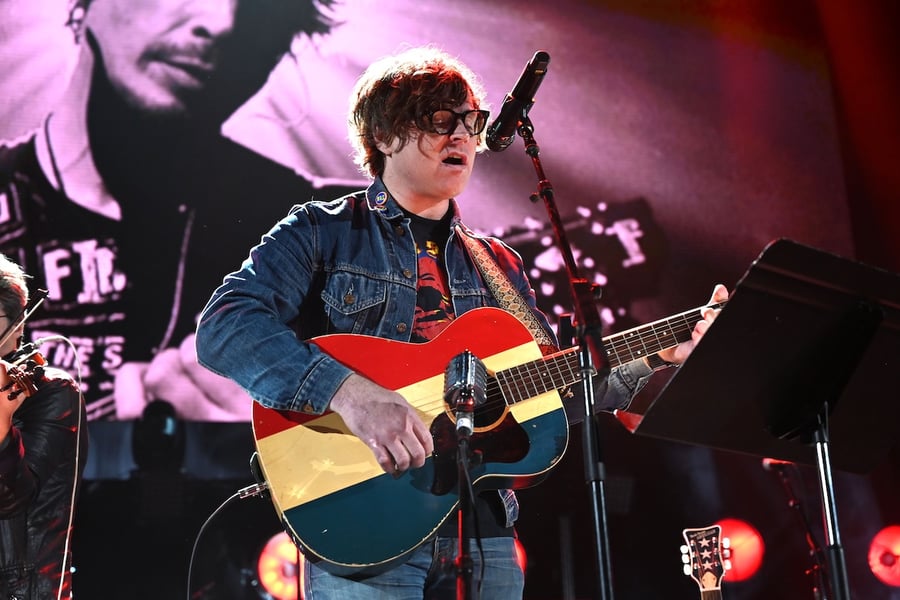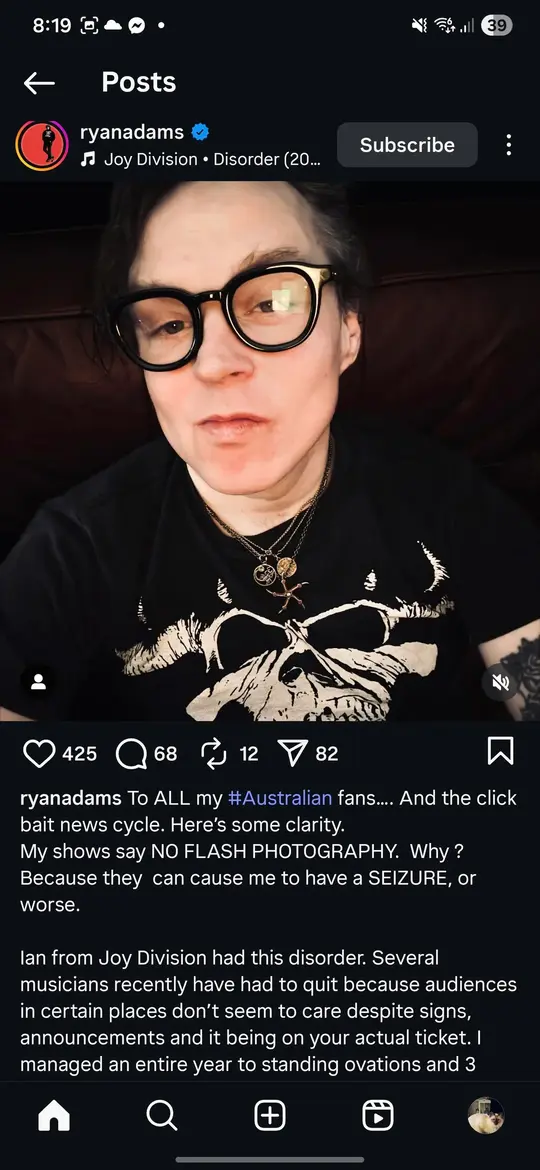Ryan Adams has issued another statement and clarified previous comments made following his controversial Australia and New Zealand tour.
In a since-deleted Instagram post, the US singer-songwriter attempted to explain to fans Down Under who had voiced their disappointment with his recent shows what exactly went down, having also recently posted: “Thanks AUS. See you never.”
“To ALL my #Australian fans… And the click bait news cycle. Here’s some clarity,” he wrote.
“My shows say NO FLASH PHOTOGRAPHY. Why ? Because they can cause me to have a SEIZURE, or worse.
“Ian from Joy Division had this disorder. Several musicians recently have had to quit because audiences in certain places don’t seem to care despite signs, announcements and it being on your actual ticket.
“I managed an entire year to standing ovations and 3 hour shows. The flight alone to Australia left my ears compressed.
“I regret saying anything after and I regret making it seem like I was addressing an entire country. I wasn’t.”
Love Music?
Get your daily dose of everything happening in Australian/New Zealand music and globally.
Adams discussed his health issues in more detail, revealing he has “vestibular disease.”
“It’s a form of epilepsy. When you are flashed with an LED, my body goes into seizure. In Melbourne, which I was so excited to play, the flash cameras would not stop,” he continued.
“I’m not “blaming my illness” you can certainly look at my IG page and see just how many shows were amazing. I had zero issues in NZ.”
Adams’ deleted Instagram post can still be viewed on his official subreddit (see below), in a thread titled “So how many of you have just been banned from his Instagram for telling the truth?”
Trouble started brewing near the beginning of the tour, when Adams stormed off stage at Melbourne’s Hamer Hall on October 12th, leading to criticism from some in attendance.
New Zealand didn’t offer much of a reprieve for Adams. As per the NZ Herald, fans were equally dismayed by Adams’ “weird” performances in Aotearoa.
In a previous Instagram post, Adams shared the set list for his final ANZ tour stop, at Auckland’s Bruce Mason Centre, but it was the accompanying caption which proved most noteworthy. “My very last show overseas,” he wrote. “What a dream. God bless you #auckland… I might not see you again but I’ll keep making these records and books because I love it…. And I love you.”
Adams was touring Australia and New Zealand to celebrate the 25th anniversary of his solo debut album, Heartbreaker.




































